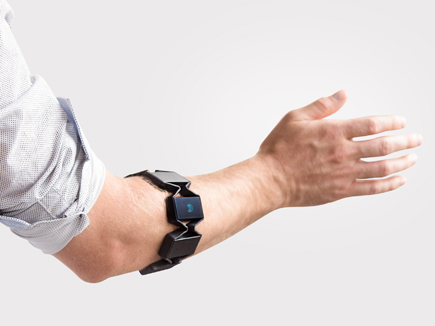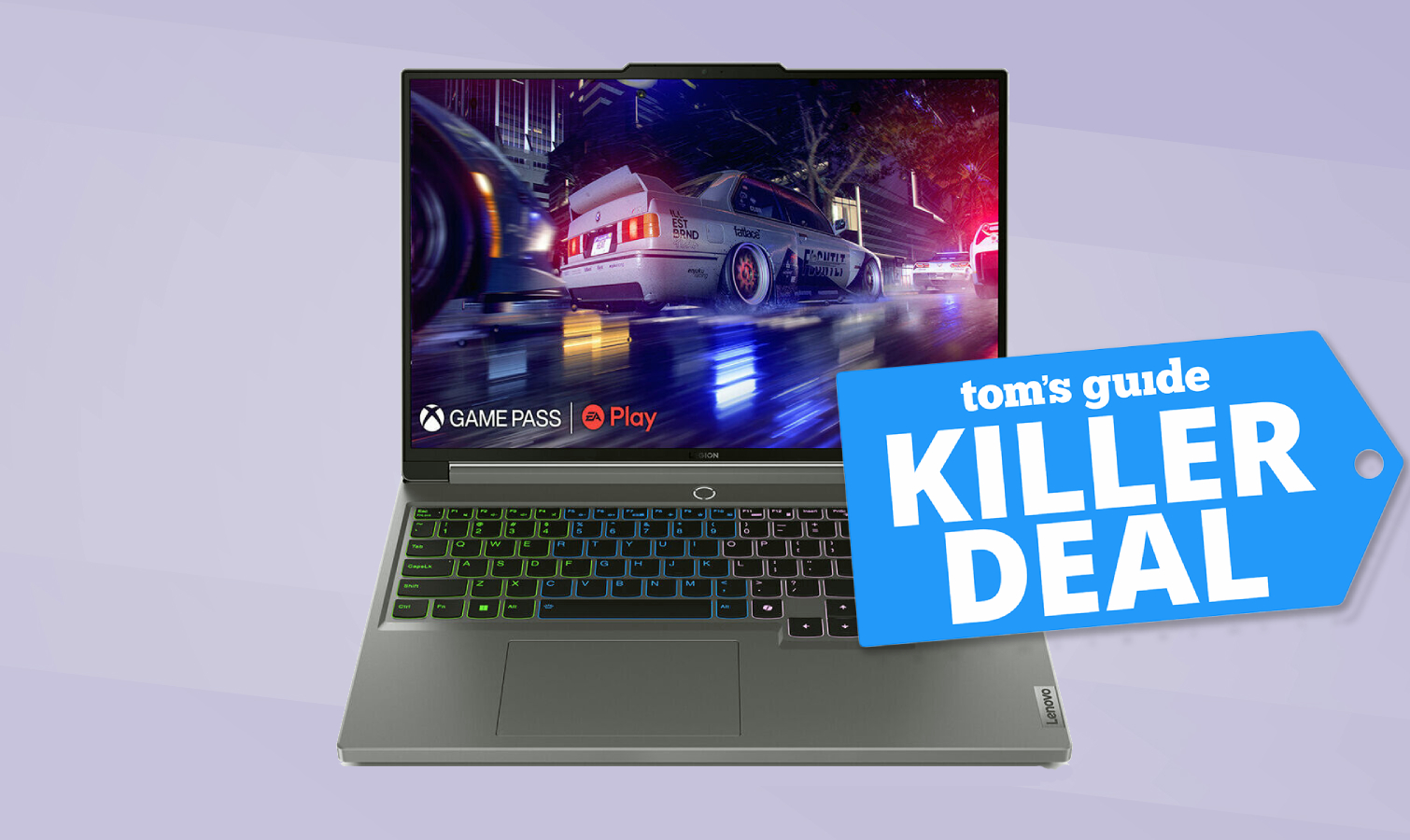Tom's Guide Verdict
The Myo Gesture Control Armband is difficult to set up and use, and doesn't do much, even when it works.
Pros
- +
Extremely novel technology
- +
Long battery life.
Cons
- -
Inconsistent performance
- -
Uncomfortable
- -
More difficult than traditional PC interfaces
- -
No way to modify basic options.
Why you can trust Tom's Guide
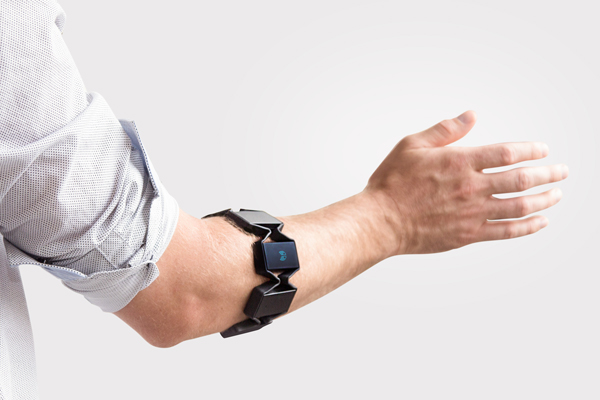
Game consoles have gone through their motion-control phase and, thankfully, come out the other side relatively unscathed. Motion controllers for PCs also have come and gone, but Thalmic Labs is ready to give it another try with its Myo Gesture Control Armband ($200). The Myo uses state-of-the-art technology to sense the electrical impulses inside your muscles, but even this level of precision isn't enough to make it a worthwhile peripheral — at least not yet.
The Myo is confusing to set up and difficult to use, and doesn't do much of interest even when it works as intended. Add in a limited range of compatible programs and a small user base, and you're left with a product that's still at least a few months away from delivering everything it promised.
Design
You've probably never seen anything like the Myo before. The device is a series of eight plastic rectangles held together by rubber links. On the inside of each rectangle are three metal contacts that measure the electrical impulses from the muscles in your forearm. (Hence the name "Myo," the scientific prefix for musculature.)
MORE: Best Fitness Trackers
The Myo looks cool and futuristic, although it can be a little bit hard to tell which way is up. Its only distinctive features are a rubber flap that covers a micro-USB port and a flashing digital logo. Its designers seem to want the Myo to look like something out of a sci-fi film, and in that, they've succeeded.
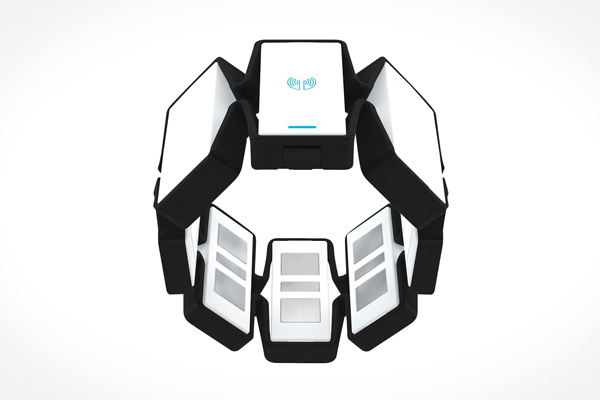
The problem is that the Myo is supremely uncomfortable. In order to receive electrical signals from your muscles, it has to be pushed up to just below the elbow and strapped on tightly. The Myo feels like it would hamper circulation; each time I took it off, I had clear indentations in my skin. It's just stretchy enough to prevent any kind of pain, but I was always relieved to remove it. And the device's bulkiness makes it pretty much impossible to wear long sleeves with it.
On the bright side, the Myo has incredible battery life. Thalmic Labs promises that the Myo will last for a day of continuous use and a week of on-and-off use, and this was exactly what I encountered. The amount of juice it stores is, frankly, impressive for such a demanding gadget.
Setup
The process of setting up the Myo is a mixed bag. Getting it up and running is easy, technical snafus notwithstanding. Learning how to use it, however, is not.
When you first remove the Myo from its admirably small box, the only instructions you get are to visit a Myo Web page. Once there, you can download a program that walks you through setup on a Windows or Mac. (Using the Myo with iOS or Android is a separate process, and setup occurs within each individual app.)
In addition to installing the Myo's software, the setup program will walk you through the most common gestures you'll need to make. Tapping your thumb and middle finger together usually has the same function as double-clicking a mouse, while waving your hand to the left lets you scroll backward through browser tabs or presentation slides.
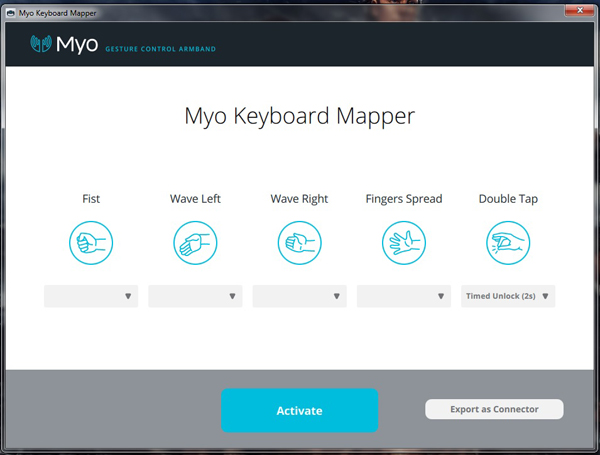
This setup process may sound simple, but that's actually a bad thing, because it's not nearly detailed enough. How do you run programs for Myo? Are there automatic plugins? Are there apps? Does every app use the same gesture controls? (Spoiler: No, and it's just as confusing as it sounds.) Even a question as simple as, "How do you unlock Myo after a period of inactivity?" is left for the user to figure out.
For the most part, Myo programs are actually plugins, and will take effect as soon as you open the relevant program or visit the appropriate website. Whether they work from there is a roll of the dice (more on that later).
For getting the software installed and the device up and running, Myo's setup process works fine. But for teaching you the basics of a device's operation, the Myo has a long way to go.
Functionality
If you're going to drop $200 on a motion-controller armband, your first question will probably be, "What does it do?" I've used the Myo on and off for about a week, and I don't have a very good answer yet. Motion controls for PC applications seem very much like a solution in search of a problem.
At present, the Myo has a growing roster of compatible apps, and Thalmic Labs is counting on widespread developer support. The armband comes with preinstalled software for eight services: Microsoft PowerPoint, Netflix, Spotify, VLC, iTunes, Adobe Reader, Keynote and Prezi.
Almost 100 additional apps are available. These range from media controllers to social media interfaces to game plugins, including big names like YouTube, Facebook and Saints Row IV, respectively. All of the apps appear to come from enthusiast developers rather than the companies themselves.
The problems here are twofold: Not every app works well with the Myo, and even those that do don't offer much that a wireless mouse or a remote control wouldn't do just as well.
Take, for example, the VLC app, which was one of the programs that Thalmic Labs showed off when I first saw the Myo at CES 2015. The software still works as advertised. You can spread your fingers to play or pause your current song. Waving left rewinds the media player, waving right fast-forwards it and making a fist lets your hand act like a volume rocker.

However, the controls are imprecise. The program often misinterpreted my open palm as a closed fist, or my hand returning to a neutral position as making a fist. Controlling my music from across the room was cool, but it wasn't worth the amount of frustration it took to get it right — and, again, there are a number of wireless peripherals that could accomplish the same task with much more precision. Thalmic Labs described this as "a process of users learning expected gestures," and my experience suggests that the process takes more than a week.
Other apps are equally dodgy. Handy Browser, which lets you control Chrome and Firefox, was sometimes too sensitive, and sometimes totally unresponsive. I could not get Netflix to work at all. From games to productivity apps, everything I tried involved much misinterpretation of motion, punctuated by brief periods of absolute brilliance when the device worked just as promised.
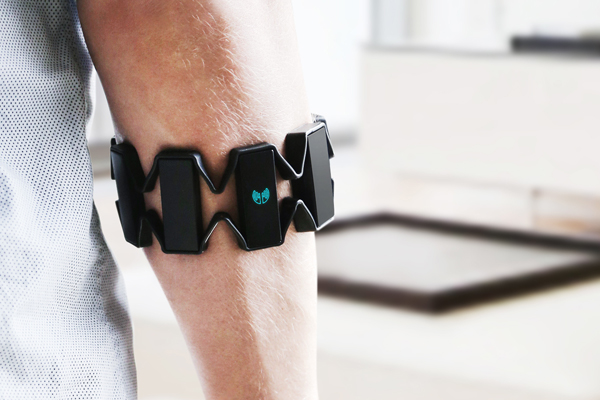
The best experience I had with the Myo was actually quite telling. An Android application known as Myo Whip let me draw my hand back and snap it forward, like Indiana Jones cracking his signature weapon. A whip sound effect followed. That's the entire app, and it is the only one that did not, at any point, misinterpret my gestures or malfunction otherwise.
Thalmic Labs informed me that both first- and third-party apps undergo constant testing to make sure they work as intended, and also takes user feedback into account when addressing app shortcomings. This means that the apps should improve over time, even though they don't always work as intended for now.
MORE: Best Smartwatches
Perhaps the most obnoxious thing about the Myo is just how frequently it locks up. If you stop using it for even a second, the device will lock, to prevent errant gestures from misdirecting the action on-screen. This is a problematic feature if you wanted, for example, to skip a track and then control the volume on a song, or advance a slideshow and then zoom in. Although experienced programmers can change the lock parameters, everyday users cannot. According to a Thalmic Labs representative, this is by design, as the company expects that users will get used to the short lock window over time.
Bottom Line
The Myo armband has potential. But right now, most of that potential is hidden underneath imprecise gesture recognition and a lack of a clear purpose. The technology underlying the Myo is very cool, but if the Wii Remote and Kinect taught us nothing else, motion controls are best suited for very particular tasks, and will not replace a good old-fashioned mouse, keyboard or controller anytime soon. Even when the Myo's apps work as intended, there isn't a single one that makes me think the product is indispensable.
My biggest issue with the Myo is that I'm just not sure what it's for, or why it's worth the price of a high-end gaming keyboard and mouse. The Myo is novel, sure, but the mouse and keyboard will help you interact with your PC in a much more straightforward and precise way.
- Fitness Tracker Buying Guide
- Best Gaming Headsets
- Smartwatch Buying Guide: Everything You Need to Know
Marshall Honorof is a senior writer for Tom's Guide. Contact him at mhonorof@tomsguide.com. Follow him @marshallhonorof. Follow us @tomsguide, on Facebook and on Google+.
Marshall Honorof is a senior editor for Tom's Guide, overseeing the site's coverage of gaming hardware and software. He comes from a science writing background, having studied paleomammalogy, biological anthropology, and the history of science and technology. After hours, you can find him practicing taekwondo or doing deep dives on classic sci-fi.
